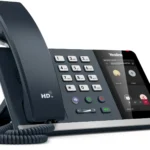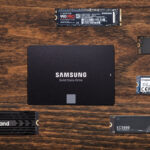Solar Power Banks in Kenya: The Complete Guide

Your phone dies right when you need to call an Uber after a long day in town.
Sound familiar?
You’re not alone.
Most Kenyans face this nightmare daily.
But here’s the thing – solar power banks in Kenya are changing the game completely.
And I’m about to show you exactly which ones are worth your hard-earned cash.
Why Solar Power Banks Are Taking Over Kenya
Let me paint you a picture.
It’s 2025.
Power outages still happen.
Your commute from Ruiru to Nairobi CBD takes 2 hours on a bad day.
Your phone battery is dying faster than your patience in traffic.
This is where solar power banks become your best friend.
They charge your devices using the sun.
No electricity needed.
No monthly bills.
Just pure, free energy from above.
Smart Power Charging Solutions That Actually Work
Before we dive deep, let me tell you about something game-changing.
Minify Solutions has revolutionized how Kenyans think about portable charging.
Their smart power charging solutions category isn’t just another tech store section.
It’s your gateway to never experiencing dead battery anxiety again.
What makes them different?
They understand the Kenyan lifestyle.
Long commutes.
Unreliable power.
Need for devices that work in our climate.
Their power bank collection is handpicked for people who refuse to be disconnected.
Because in Kenya, staying connected isn’t luxury.
It’s survival.
The Best Solar Power Banks You Can Actually Buy in Kenya Right Now
Let me break down the real players in the Kenyan solar power bank market.
No fluff.
Just facts.
1. Goal Zero Solar Power Banks in Kenya
Price Range: KSh 8,000 – KSh 25,000
These American-made beasts are the gold standard.
Why they dominate:
- Military-grade durability – survives Kenyan roads
- Fast solar charging – 6-8 hours of full sun gives you full power
- Multiple device charging – charge 3 devices simultaneously
- Weather resistant – handles our unpredictable weather
Best Model: Goal Zero Flip 24
- Capacity: 6,700mAh
- Solar charging time: 8-10 hours direct sunlight
- Device charges: iPhone 13 twice, Samsung Galaxy once
- Where to buy: Almiriatechstore, specialized outdoor stores
These aren’t cheap, but they last forever.
2. BioLite Solar Power Banks in Kenya
Price Range: KSh 12,000 – KSh 35,000
The smart choice for tech lovers.
What sets them apart:
- Built-in battery storage – charges even when sun isn’t shining
- Smart charging technology – optimizes power delivery
- Compact design – fits in your backpack easily
- Real-time power monitoring – know exactly how much juice you have
Best Model: BioLite SolarPanel 5+
- Capacity: 3,200mAh built-in battery
- Solar panel output: 5 watts
- Unique feature: Charges devices while storing solar energy
- Perfect for: Daily commuters, outdoor enthusiasts
3. Anker Solar Power Banks in Kenya
Price Range: KSh 6,000 – KSh 18,000
The sweet spot between quality and affordability.
Why Kenyans love them:
- Proven reliability – Anker’s reputation speaks for itself
- Fast charging technology – PowerIQ and VoltageBoost
- Multiple ports – USB-A and USB-C options
- Great warranty – 18 months coverage
Best Model: Anker PowerPort Solar
- Capacity: Works with separate power bank
- Solar efficiency: 21.5% conversion rate
- Foldable design – easy to carry
- Weather rating: IPX4 water resistant
4. Local Brand Solar Power Banks in Kenya
Price Range: KSh 2,500 – KSh 8,000
Budget-friendly options that get the job done.
What you get:
- Affordable entry point – perfect for students
- Basic solar charging – slower but functional
- LED flashlight feature – bonus utility
- Available everywhere – Jumia, local electronics shops
Popular brands:
- Xiaomi solar variants
- Baseus solar models
- Generic Chinese brands with decent reviews
How Much Should You Actually Pay for a Solar Power Bank in Kenya?
Here’s the brutal truth about pricing.
Under KSh 3,000:
- Probably fake solar panels
- Will disappoint you
- Buy at your own risk
KSh 3,000 – KSh 8,000:
- Basic functionality
- Slow solar charging
- Good for emergencies only
KSh 8,000 – KSh 20,000:
- Quality solar panels
- Reliable performance
- Best value for most people
Above KSh 20,000:
- Premium features
- Professional-grade durability
- Worth it if you’re serious about off-grid power
The Ultimate Solar Power Bank Buying Guide for Kenyans
Step 1: Know Your Power Needs
Light user (social media, calls):
- 10,000mAh capacity
- 1-2 charging ports
- Budget: KSh 5,000 – KSh 10,000
Read also: Best 10000mAh Power Banks in Kenya: 11 Game-Changing Options (+ Real Prices)
Moderate user (work, entertainment):
- 20,000mAh capacity
- 2-3 charging ports
- Budget: KSh 10,000 – KSh 20,000
Read also: 11 Best 20000mAh Power Banks in Kenya (+ Prices)
Heavy user (business, travel):
- 30,000mAh+ capacity
- Multiple ports with fast charging
- Budget: KSh 20,000+
Read also: 7 Best 30000mAh Power Banks in Kenya (+ Prices)
Step 2: Check These Features
Solar panel efficiency:
- Look for monocrystalline panels
- Minimum 20% conversion rate
- Foldable design for portability
Battery capacity:
- mAh rating shows total storage
- Higher numbers = more charges
- But also means heavier weight
Charging ports:
- USB-A for older devices
- USB-C for newer phones
- Wireless charging is a bonus
Build quality:
- Water resistance (IPX4 minimum)
- Drop protection
- Temperature tolerance
Step 3: Avoid These Common Mistakes
Don’t buy based on price alone.
Cheap solar power banks are expensive in the long run.
They break.
They charge slowly.
They lie about capacity.
Don’t ignore weight.
A 30,000mAh solar power bank weighs like a brick.
Great for camping.
Terrible for daily commuting.
Don’t expect miracles from solar charging.
Solar panels need direct sunlight.
Cloudy days mean slow charging.
It’s supplementary power, not replacement power.
Where to Buy Solar Power Banks in Kenya (Without Getting Scammed)
Trusted Physical Stores:
Almiriatechstore (Nairobi):
- Verified products
- Good warranties
- Price range: KSh 3,330 – KSh 45,000
- Location: Multiple Nairobi outlets
Minify Solutions:
- Fast shipping countrywide
- Secure payment methods
- Focus on smartphone accessories
Reliable Online Platforms:
Jumia Kenya:
- Largest selection
- Customer reviews
- Cash on delivery option
- Return policy protection
Minify Solutions:
- Curated quality products
- Expert customer support
- Specialized in smart charging solutions
- Kenya-focused selection
Zuricart & Rapidtech:
- Competitive pricing
- Fast delivery
- Tech-focused inventory
Red Flags to Avoid:
- Prices too good to be true
- No warranty offered
- Suspicious seller reviews
- No return policy
- Unknown brands with zero online presence
What Kenyans Actually Say
Mary from Kiambu: “I bought a Goal Zero for my matatu business. Game changer. My phone stays charged for customer calls, and I even charge passengers’ phones for extra income.”
David, University Student: “Anker solar bank saved my campus life. Library sessions, study groups, never worry about dead battery during exams.”
Grace, Small Business Owner: “BioLite powers my M-Pesa business. When ECB goes off, I’m still serving customers. Investment paid for itself in 2 months.”
Solar Power Bank Maintenance: Make It Last Forever
Daily Care:
- Clean solar panels weekly – dust kills efficiency
- Avoid extreme temperatures – don’t leave in hot car
- Charge monthly – even if not using
- Use original cables – fake cables damage batteries
Storage Tips:
- 50% charge for long-term storage
- Cool, dry place
- Away from direct sunlight when storing
- Check every 3 months
Troubleshooting Common Issues:
Slow charging:
- Clean solar panels
- Check cable connections
- Verify direct sunlight exposure
Not holding charge:
- Battery might be old
- Temperature too extreme
- Time for replacement
Device not recognized:
- Try different cable
- Check output specifications
- Reset power bank if possible
Frequently Asked Questions About Solar Power Banks in Kenya
How long does it take to charge a solar power bank in Kenya?
In direct Kenyan sunlight, expect 8-12 hours for full charge. Cloudy days can take 15-20 hours. Morning sun (7am-11am) is most efficient.
Can solar power banks work during rainy season?
They work but charge much slower. Cloudy skies reduce efficiency by 70-80%. Best to pre-charge before rainy season starts.
Are solar power banks worth it in Nairobi?
Absolutely. Urban pollution reduces efficiency slightly. But you still get enough power for emergencies. Plus you can charge using regular electricity too.
How many times can a solar power bank charge my iPhone?
Depends on capacity:
- 10,000mAh = 2-3 full iPhone charges
- 20,000mAh = 4-6 full iPhone charges
- 30,000mAh = 7-10 full iPhone charges
Do solar power banks work with all phone brands?
Yes, if they have standard USB ports. Check your phone’s charging requirements. USB-C is becoming standard for newer devices.
What’s the lifespan of a solar power bank?
Quality brands: 3-5 years, budget brands: 1-2 years. Solar panels last longer than batteries.
The Bottom Line: Should You Buy a Solar Power Bank in Kenya?
Here’s my honest take.
If you are tired of dead batteries controlling your life, yes.
If you want energy independence, yes.
If you’re always on the go, absolutely yes.
But if you rarely leave home and have stable electricity, probably not.
The sweet spot for most Kenyans is the KSh 10,000 – KSh 20,000 range.
You get quality without breaking the bank.
You get reliability without unnecessary features.
You get freedom from battery anxiety.
And in a country where staying connected means staying ahead, that’s priceless.
Ready to never worry about dead batteries again?
Check out Minify Solutions’ power bank collection and join thousands of Kenyans who’ve already made the switch to smart charging.
Your future self will thank you.
Especially when everyone else’s phone is dead, and yours is still going strong.
Read also:


 IP Phones & PBX
IP Phones & PBX
 Solid State Drive
Solid State Drive